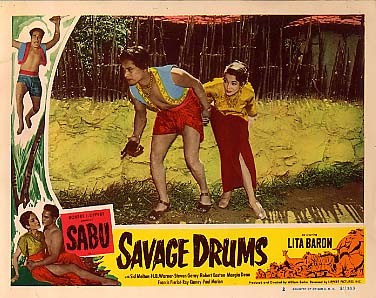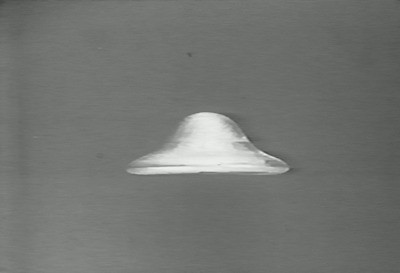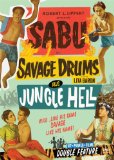| Reviews & Columns |
|
Reviews DVD TV on DVD Blu-ray 4K UHD International DVDs In Theaters Reviews by Studio Video Games Features Collector Series DVDs Easter Egg Database Interviews DVD Talk Radio Feature Articles Columns Anime Talk DVD Savant Horror DVDs The M.O.D. Squad Art House HD Talk Silent DVD
|
DVD Talk Forum |
|
|
| Resources |
|
DVD Price Search Customer Service #'s RCE Info Links |
|
Columns
|
|
|
Sabu Double Feature: Savage Drums & Jungle Hell
A typical Lippert production that knows how to efficiently deliver its low-budget goods, Savage Drums (1951) is a weird morphing of several genres, a merging of the standard jungle adventure with the virulent anticommunist thriller, and some Arabian Nights-style palace intrigue tossed in. Sabu (1924-1963) stars as Los Angeles-based prizefighter Tipo Tairu, compelled to return to his island nation homeland when his brother John, the newly-crowned king, is murdered by an assassin's bullet.
With John's fiancé Tania (Margia Dean), Tipo's boxing manager Jimmy (Realart contract character comedian Sid Melton - yeah!) and assistant Tex Channing (Robert Easton) along the for ride, as well as fellow countryman Rami (Ray Kinney), and a monkey named Junior, Tipo triumphantly returns home to claim the crown.
He's met by old senior counselor Maou (frail H.B. Warner, a surprising face to turn up in a film like this) and conniving cousin Rata (Paul Marion), secretly conspiring with Tania as well as Russian spy Borodov (Steven Geray) to take over the island using North Korean troops. (Or Chinese - the film isn't clear about this, referring to the invading army as being from The People's Government of Asia, whatever that is.)
By Lippert standards this seems to have been a fairly big (maybe as high as $300,000?) production, featuring as it does lots of extras and fairly expansive sets, and a Peruvian-looking village location that was probably built for some other movie. There's even an elaborate tracking-crane shot showing off a big if barren soundstage set.
The film is ridiculous in sometimes amusing ways. No one on their United Airlines flight from Los Angeles to Honolulu bats an eye when Jimmy and Tex board the airplane dressed like Pancho Villa, complete with ammo belts, six-shooters, and rifles.
Melton and Easton offer a double-dose of lame but likeable comedy relief. Watching the royal council vote on an American treaty, their "yeas" and "nays" expressed in the form of white and black beads, Tex remarks, "I thought they wuz getting' ready fer a bingo game!" When Jimmy is cautioned against drinking too much cava, "that it sneaks up on you," Jimmy replies, "That's okay. I got track shoes."
Ironically, Sabu doesn't come off too well in this, his normally sunny screen persona replaced here with grim, anticommunist determination bordering on petulance. Even John Wayne retained his sense of humor in Jet Pilot and Big Jim McLain. Opposite Sabu is beautiful, Spanish-born Lita Baron as Sari (who also wears one); at the time she was married to Rory Calhoun. The film is somewhat interesting in that light and darker-skinned actors (like Baron and Sabu), as well as light-skinned actors in darker body make-up, casually touch and freely engage in romantic relationships. Such things were rare in movies of this period and I wonder if the film didn't run into local censorship problems.
Savage Drums has a lot of momentum and something at least moderately interesting is happening in every scene. The action-filled climax is lively and the villains meet an audience-pleasing comeuppance. (*** out of *****)
Flying saucer footage found in Jungle Hell but not Jungle Boy
Sabu and familiar loincloth (which resembles an enormous diaper) are back for Jungle Hell, a film that, to say the least, has a convoluted, confusing history. Apparently it began production in September 1954 as a pilot for a Sabu television series. That didn't sell, and so a theatrical feature was cobbled together using the aborted TV footage and a lot - and I mean A LOT of stock footage. This resulted in an 82:48 movie called Jungle Boy, which may or may not have been released theatrically in the United States, though apparently it was in Mexico and possibly elsewhere.
Around 1964, a company called Medallion, which distributed many otherwise unreleasable foreign genre films to local television stations, unleashed a reworking of Jungle Boy called Jungle Hell, and which may have been cobbled together by others as early as 1956-57. Thanks to the very helpful folk at the Classic Horror Film Board, especially film historians Tom Weaver and "Doctor Kiss," there's evidence that version of the film was released to theaters, briefly, in 1957-58. Apparently, it featured narration either by Sabu or someone pretending to be Sabu, had different music, and tacked-on footage of a flying saucer, which in that version supposedly is the source of all the film's mystery. Even with the new footage this version was cut to around 78 minutes.
Jungle Hell was shown throughout the 1960s and early-'70 but then disappeared. When Weaver was hired to write the packaging text for this release, he played up the appearance of the flying saucer, unaware the film Kit Parker had in his hot little hands was the saucerless Jungle Boy version, not Jungle Hell.
I've seen dozens of terrible low-budget jungle adventure movies through the years, but Jungle Boy is just about the very worst of the bunch - no small accomplishment. It's long and boring and almost literally plotless and incomprehensible. Set in the jungles of India, Sabu (Sabu) frets over his nephew, who burned his arm after bushing it alongside a mysterious - and presumably radioactive - rock that resembles an ostrich egg. Sabu wants to take the lad to Dr. Paul Morrison (David Bruce) but the proprietary witch doctor Shan-Kar (Naji), a cliché in such pictures, adamantly refuses. During the night Sabu steals the boy to Morrison anyway, and the by now feverish nephew is treated and recovers. Curious about this strange rock, Morrison cables Dr. Angus Caldwell (Ted Stanhope) in London, who in turn dispatches Dr. Pamela Ames (K.T. Stevens) in his stead.
Her plane crashes and she is the only survivor, but Sabu comes to her rescue. Meanwhile, Shan-Kar's right-hand man, Kumar (Robert Cabal) and a Great White Hunter/probable Commie type, Trosk (George E. Stone) are up to no good, possibly involving the ongoing elephant and teakwood drive, and/or something to do with that "burning rock."
Jungle Boy is padded with stock footage like no other. Low budget jungle movies, like those cranked out by PRC and Monogram in the 1940s and Columbia and Allied Artists in the 1950s, often resorted to scads of jungle footage, but never like this. Probably something like two-thirds of the movie (at least) consists of stock shots, most of it disconnected utterly from the new footage, all of it having nothing to do with anything else.
A tiger battles a crocodile in one scene, a mongoose and a cobra tangle in another. But mostly it's elephants. Lots and lots and lots and lots of elephants. The ratio of stock shots of elephants to new footage featuring Sabu is about 8-to-1. Indeed, Sabu has very little to do in his own movie. His character is completely absent during the last five minutes and he has no role in its climax. (Sabu is last seen ignominiously taking orders from and schlepping on behalf of Dr. Morrison.) Come to think about it, there is no climax. The film more or less just grinds to a halt.
One has to admire the chutzpah of Jungle Boy's producers, however. The film opens with a title card superimposed over a shot of the Taj Mahal, thanking the "Maharajah of Mysore" for his cooperation, implying that the picture was actually shot in India. But the grainy stock shots, some of it perhaps dating back to the silent era, match the cheap soundstage jungle not at all. (* 1/2)
Video & Audio
Both films are presented in their original full-frame theatrical aspect ratios and look terrific. The Dolby Digital mono audio (English only, with no subtitle options) is also fine. The disc is region-free.
Extra Features.
Supplements include a few trailers from some other VCI jungle movies but the main attraction is a half-hour interview with delightful Margia Dean, who talks with great affection about her days at Lippert and elsewhere. It's a fun and surprisingly informative interview.
Parting Thoughts
Though Jungle Boy might well drive you insane from boredom or cause you to develop Pachydermophobia, this is a fun double-bill tailor-made for fans of intriguing lower-case B-movies. Recommended.
Stuart Galbraith IV's latest audio commentary, for AnimEigo's Musashi Miyamoto DVD boxed set, is on sale now.
|
| Popular Reviews |
| Sponsored Links |
|
|
| Sponsored Links |
|
|
| Release List | Reviews | Shop | Newsletter | Forum | DVD Giveaways | Blu-Ray | Advertise |
|
Copyright 2024 DVDTalk.com All Rights Reserved. Legal Info, Privacy Policy, Terms of Use,
Manage Preferences,
Your Privacy Choices | |||||||
















